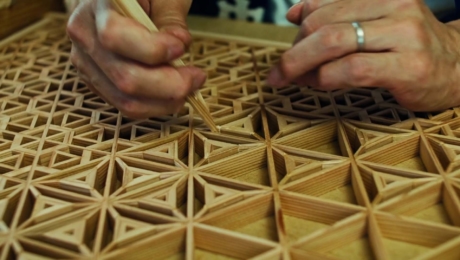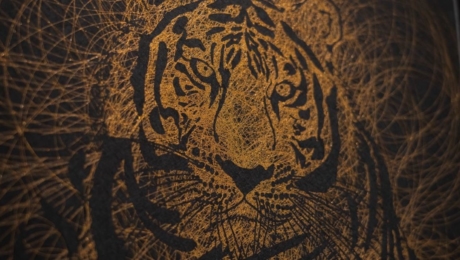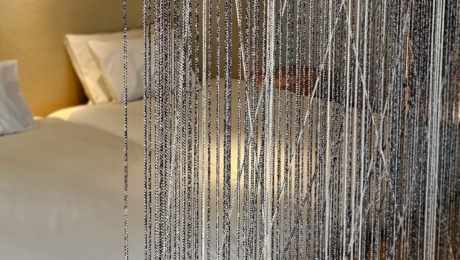
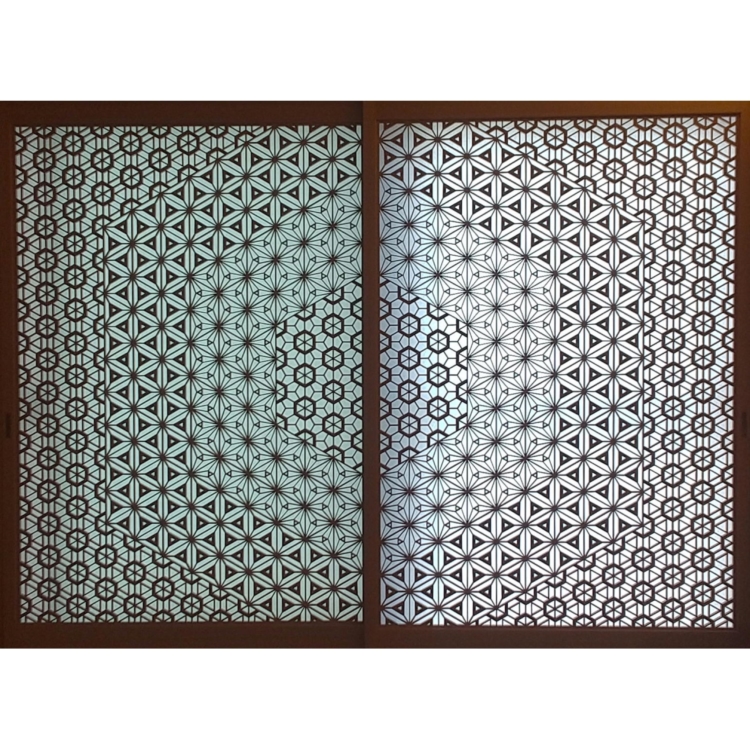
Kumiko handiwork featuring exquisite geometric patterns with rich symbolism
2022.11.16
LIFEHemp leaves, tortoise shells, and paulownia are some of the beautiful geometric patterns in the Kumiko handiwork found on paper sliding doors, transoms, and other fittings. The history of Kumiko handiwork dates back to the Heian period, with the technique eventually flourishing in the Edo period when craftsmen developed the skills and tools necessary for creating more intricate details.
“The most important thing is to select the right wood. I personally visit the areas of production to select the finest wood with no inconsistencies so that I can visually inspect the materials before making a purchase,” Takahiro Tanaka, the second-generation owner of Edo Kumiko Tatematsu, tells us.
The main materials used are the wood of coniferous trees, primarily that of famous woods such as the Kiso hinoki cypress, Akita cedar, and Yoshino cedar. While many steps in the production of Kumiko handiwork can be mechanized these days, Tatematsu continues to insist on performing each step by hand using traditional techniques.
The most important step in this process is the measurement of parts, given that precision is paramount and even a 0.1mm error cannot be tolerated. The lumber is planked, grooved, and notched before being assembled. The intricate technique of assembling thousands or tens of thousands of parts to create a pattern is the result of numerous years of experience.
Tanaka tells us that there are over 200 different types of Kumiko patterns, and each pattern has its own meaning.
“For instance, the popular hemp leaf has long been known as a pattern with the power to ward off evil spirits. It is also used to wish for the healthy growth of children as it is a fast-growing plant. Cherry blossoms, which bloom in huge numbers, signify prosperity, while the tortoise shell is a symbol of longevity. The various thoughts of our predecessors are passed down over the years through these patterns.”
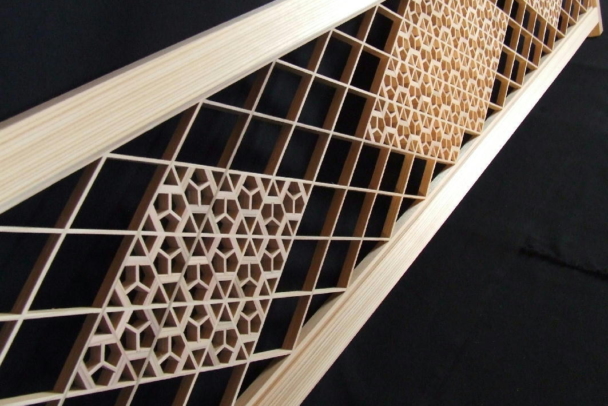
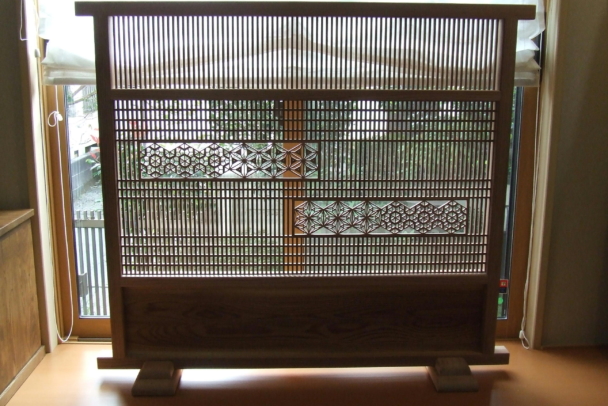
Left “Transom” Cherry blossoms
Right “Partitioning screen” Upper row from the left: cherry blossoms, bellflowers; Lower row from the left: stylized hemp leaves, snowflakes
Because of this, Tanaka tells us that he always carefully considers the symbolism of patterns whenever he receives a request from a client. Recently, when he was asked to create a piece of Kumiko handiwork for the wall at the entrance of a vocational school in Edogawa Ward, he created a large framework measuring 4m wide by 3m high that is inlaid with Kumiko handiwork featuring patterns such as cherry blossoms, hemp leaves, bellflowers, and snowflakes to echo the four seasons of Edogawa.
“We value dialogue with our clients more than anything else, so we were happy to hear that they were pleased with our work. We are also encouraged to hear from clients to whom we have delivered paper sliding doors and folding screens when they tell us about the variations in how the lattices look depending on the ambient lighting or the beautiful silhouettes created by the patterns when they are illuminated at night. Since we only utilize the finest wood, we hope that our clients will use our products for many years to come as they gradually turn amber and develop a luster with the passage of time.”


